Alcatraz Island isn’t just a former federal prison; it’s a treasure trove of history floating in San Francisco Bay. I’ve visited ‘The Rock’ more times than I can count, and let me tell you, there’s a world of difference between shuffling along with the tourist crowds and truly experiencing this fascinating place. From avoiding the morning fog to discovering hidden spots most visitors miss, my years exploring this infamous island have taught me all the tricks. Get ready for my insider secrets that’ll transform your Alcatraz adventure from ordinary to unforgettable!
1. Book Tickets Weeks in Advance
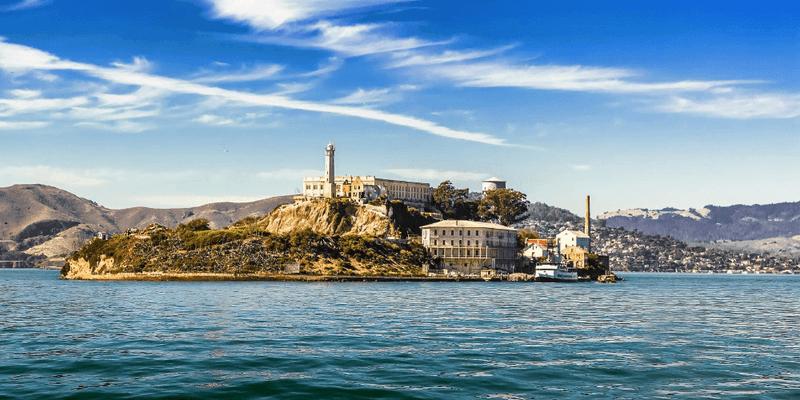
I learned this lesson the hard way, friends! Standing at Pier 33 with my cousin from Ohio, watching his vacation dreams crumble as the ticket agent explained Alcatraz was sold out for the next two weeks. Talk about awkward!
Alcatraz tickets vanish faster than my willpower at a donut shop. The island limits daily visitors, making this one of San Francisco’s most competitive attractions. During summer and holiday periods, tickets often sell out 3-4 weeks ahead.
Your best bet? Visit the official Alcatraz Cruises website exactly 90 days before your planned visit; that’s when new tickets drop. Avoid sketchy resellers charging triple price. Pro tip: If you’re desperate for last-minute tickets, check for cancellations at 4pm the day before your desired visit date. That’s when they release any no-shows back into the system!
2. Dress in Layers for Unpredictable Weather
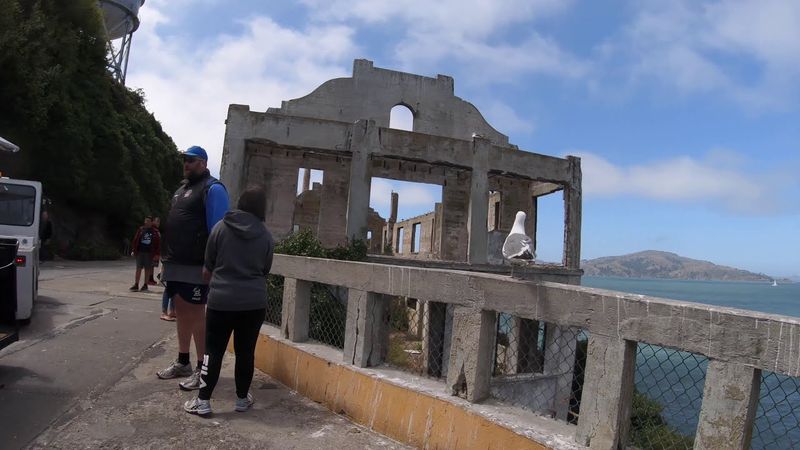
Rookie mistake alert! My first Alcatraz visit had me shivering in shorts while the infamous San Francisco fog rolled in like nature’s air conditioning. The bay creates its own microclimate that’ll have you sweating one minute and freezing the next.
Pack like a weather-savvy explorer: lightweight jacket, hat, sunscreen, and comfortable walking shoes are non-negotiable. The island offers practically zero shelter from sudden downpours or harsh sun. Remember those dramatic prison yard scenes from the movies? That’s where you’ll be standing; exposed to whatever Mother Nature throws your way.
Morning visitors should prepare for the infamous Karl (yes, locals named the fog) who frequently blankets the island until noon. Afternoon guests need sun protection as that midday heat bounces mercilessly off concrete prison walls. My personal must-have? A small backpack to stash layers as the temperature rollercoasters throughout your visit.
3. Choose Afternoon Tours for Better Photos
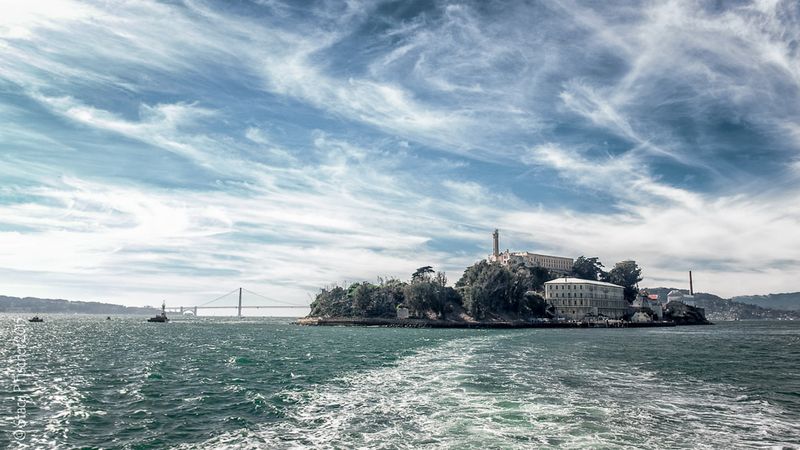
Morning fog had me taking pictures of… well, nothing but white mist during my first visit! After multiple trips, I’ve cracked the code for Instagram-worthy shots: afternoon tours are your golden ticket.
Morning visits often feature San Francisco’s signature fog obscuring those postcard-perfect views of the Golden Gate Bridge and city skyline. By afternoon (especially in summer and fall), the fog typically burns off, revealing jaw-dropping panoramas from this island fortress.
Golden hour photographers should book the last tour of the day (usually departing around 3:15pm). The lighting transforms the forbidding prison into a photographer’s dream as sunset approaches. Don’t miss the west-facing cells on the top tier; former inmates could hear San Francisco’s nightlife through those windows, a special kind of torture that makes for powerful photographs. My secret spot? The recreation yard offers the most dramatic city views, especially when framed between guard towers.
4. Take the Award-Winning Audio Tour
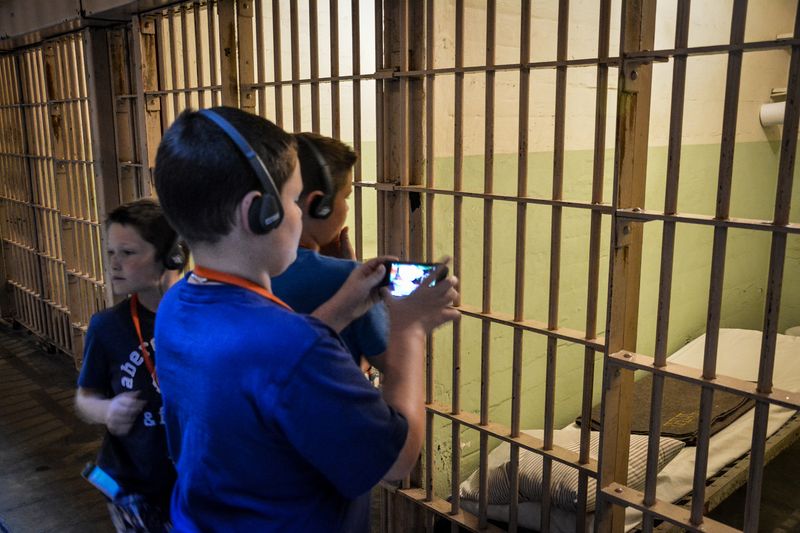
“Skip the audio tour and just explore on your own,” said absolutely no one who knows what they’re talking about! I almost made this catastrophic mistake until a fellow traveler practically tackled me to put those headphones on.
Narrated by actual former guards and inmates, this isn’t your average monotonous museum recording. You’ll hear the chilling firsthand accounts of infamous escape attempts, prison riots, and daily life inside America’s most notorious prison. The audio guides you through the facility while ambient sounds of slamming cell doors and echoing footsteps create an immersive time machine.
Allow approximately 45 minutes for the main cellhouse tour, though I recommend pausing frequently to explore areas that intrigue you. The audio tour comes free with your ticket and is available in multiple languages. My favorite part? Standing in the exact dining hall spot where Al Capone once sat while hearing about his final mentally deteriorated years playing banjo in the prison band.
5. Explore Beyond the Main Cellhouse
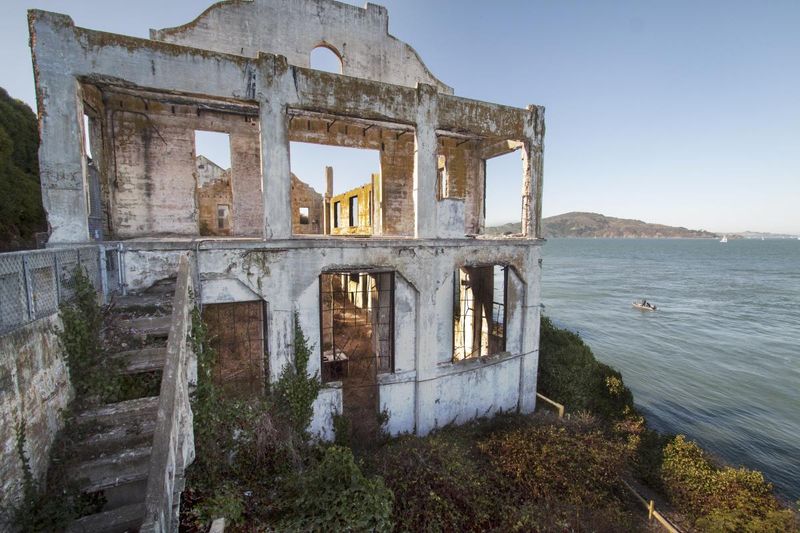
Most tourists make a beeline for the cells, listen to the audio tour, then rush back to catch the ferry. Their loss! The lesser-known areas of Alcatraz hold the most fascinating secrets and the smallest crowds.
The island’s history extends far beyond its prison years. Before housing notorious criminals, it served as a Civil War fortress and later as the focal point of the Native American occupation movement of 1969-71. The warden’s house ruins, officers’ gardens, and water tower offer both historical intrigue and spectacular photo opportunities most visitors completely miss.
My personal favorite hidden gem? The recreation yard feels entirely different once the audio-tour crowds disperse. Standing alone where inmates once played baseball beneath guard towers creates an eerie connection to the past. During spring and summer, check out the bird sanctuary areas on the western side. The island transforms into a nesting ground for snowy egrets and cormorants; nature reclaiming what was once the country’s most escape-proof prison.
6. Join a Ranger-Led Program
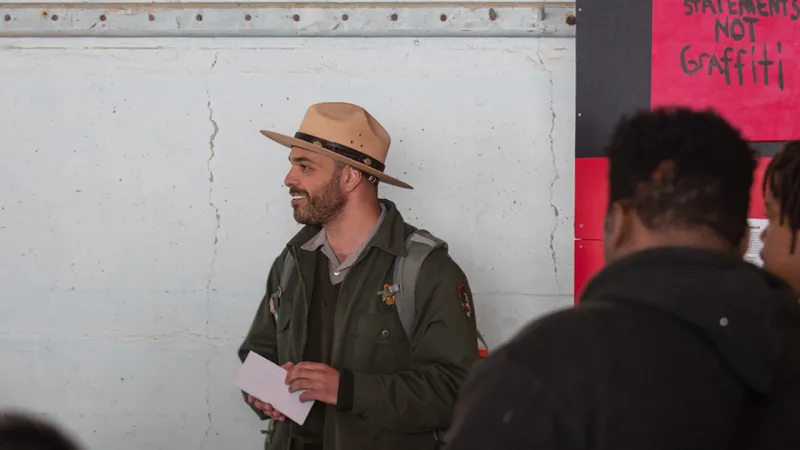
Free knowledge from passionate experts? Yes, please! Discovering the ranger programs transformed my understanding of Alcatraz from “cool old prison” to “holy cow, this place is fascinating on seventeen different levels!”
National Park Service rangers conduct specialized talks throughout the day covering everything from famous escape attempts to the island’s surprising ecological importance. Unlike the audio tour’s fixed narrative, these interactive sessions allow you to ask questions and often visit restricted areas not included on the main route.
Rangers announce program times and meeting locations on the dock when you arrive. My absolute favorite is the “Escapes of Alcatraz” program where rangers debunk myths while revealing the ingenious methods prisoners employed in their break-out attempts. For history buffs, the “Fortress Alcatraz” program explores the island’s pre-prison military history. Pro tip: Ask rangers about the underground tunnels from the military era; sometimes they’ll take small groups down if you express genuine interest!
7. Pack Snacks and Water
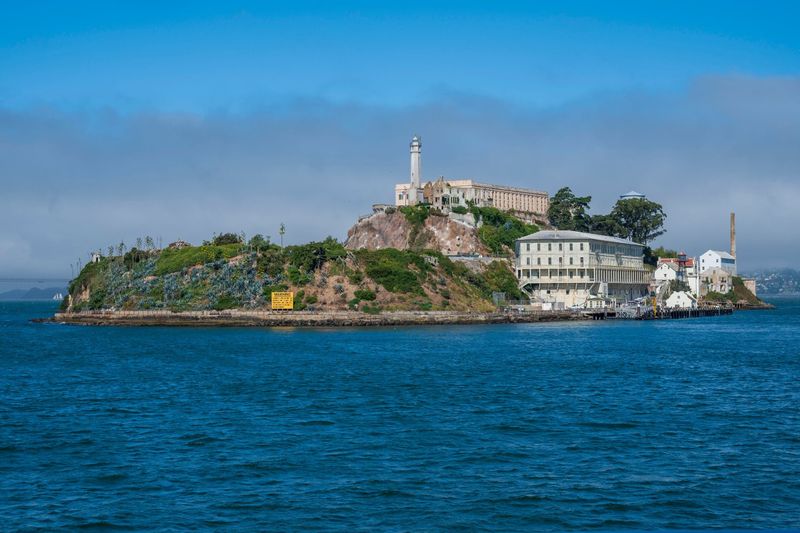
My stomach growls just thinking about my first visit when I assumed there’d be a cute café on the island. Spoiler alert: prison islands aren’t known for their dining scenes! Learn from my hangry mistakes, friends.
Alcatraz has no food services whatsoever once you’re on the island. The only place to purchase refreshments is on the ferry before departure and after your return. Most visits last 2-3 hours, and all that history-absorbing and hill-climbing works up a serious appetite.
Bring a small backpack with water bottles and easy snacks like granola bars or fruit. The dock area has picnic tables with million-dollar views of San Francisco; perfect for a mid-tour energy boost. Just remember to pack out all your trash as there are limited receptacles. My time-tested strategy? A frozen water bottle that thaws throughout your visit, providing cold refreshment while exploring those non-air-conditioned cell blocks during warmer months.
8. Stay for the Night Tour Experience
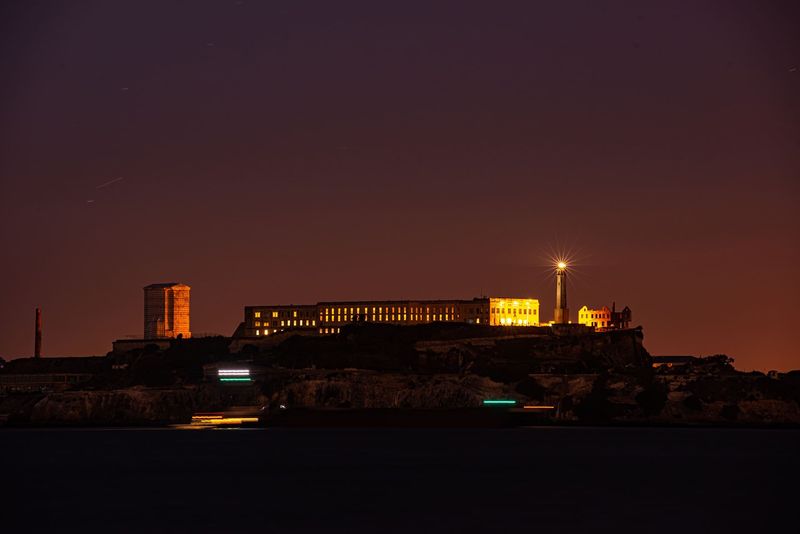
Regular daytime tours? Perfectly fine. Night tours? Absolutely spine-tingling! The island completely transforms after sunset, and I’m still getting goosebumps remembering my first evening visit.
Alcatraz Night Tours typically run Thursday through Monday and include special programs and demonstrations not available during day tours. As darkness falls, the cellhouse takes on an authentically eerie atmosphere; imagine standing in pitch-black solitary confinement cells with only the distant city lights visible through tiny windows.
Night tours cost slightly more but include extras like a guided walk around the island perimeter and demonstrations of the cell door locking mechanism that controlled the entire cellhouse. The real magic happens as the sun sets and San Francisco’s skyline illuminates across the bay; a view inmates described as torturous in its beauty and proximity. Bring a small flashlight for exploring darker areas and book these limited-capacity tours even further in advance than day tickets.
9. Visit the Gardens of Alcatraz
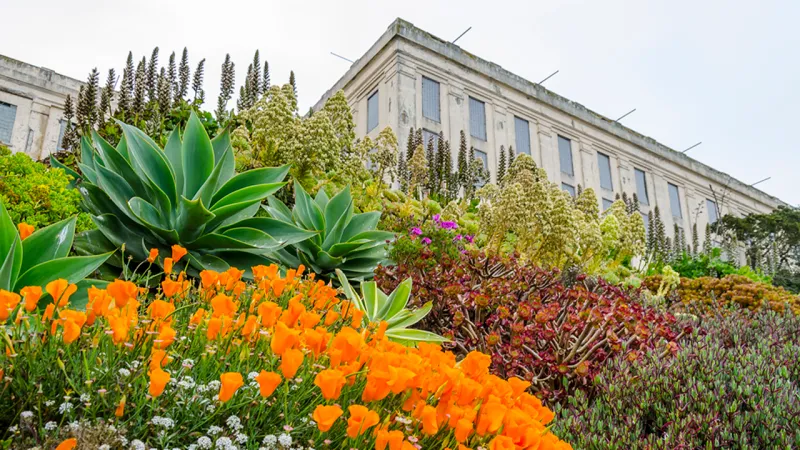
Flowers and prison yards? Not an obvious combo, I know! I nearly missed these botanical treasures my first few visits until a local tipped me off about Alcatraz’s surprising floral history.
Believe it or not, this harsh rock island hosts historic gardens that have survived decades of neglect. Originally planted by military families and later tended by prison guards and inmates, these resilient plants offer a striking contrast to the stark prison buildings. The Garden Conservancy has restored many areas to their 1940s-50s appearance.
Follow the signs for self-guided garden tours or join the Friday morning docent-led walks (requires booking the earliest ferry). My favorite spot is the Officers’ Row gardens where you’ll find heritage rose varieties brought by guards’ wives to beautify their island homes. The west-side terraced gardens built by prisoners offer both stunning flowers and the best views of the Golden Gate Bridge. Photographers alert: spring brings spectacular blooming succulents that somehow thrive in this challenging environment.
10. Learn About the Native American Occupation
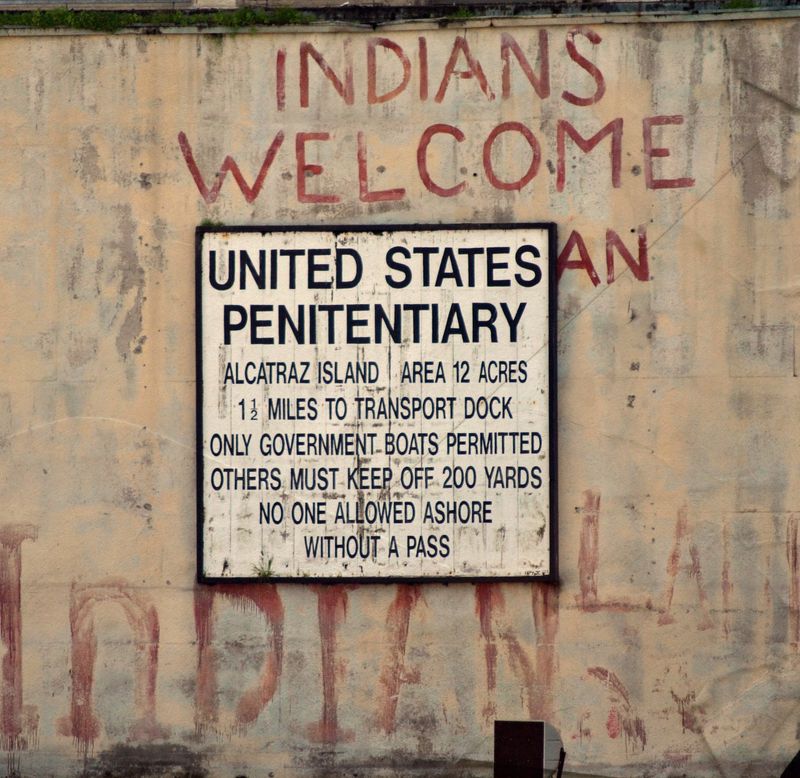
Most visitors have no idea that after the prison closed, Alcatraz became ground zero for one of the most significant Native American civil rights movements in history! This fascinating chapter blew my mind when I first heard about it.
From 1969 to 1971, Native American activists occupied Alcatraz, claiming the abandoned island under a treaty that granted them rights to unused federal lands. Their 19-month protest brought unprecedented attention to indigenous rights issues across America. Look for the faded red graffiti near the dock proclaiming “Indians Welcome” and “Home of the Free Indian Land”; preserved historical artifacts from this powerful movement.
The water tower still bears painted messages from the occupation, and informational exhibits throughout the island tell this important story. Ask rangers about special programs commemorating the occupation, especially around Indigenous Peoples’ Day. My most meaningful Alcatraz moment? Watching the annual Indigenous Peoples’ Sunrise Ceremony held every Thanksgiving on the island; a powerful event that continues the legacy of activism that forever changed Alcatraz’s story.
Dear Reader: This page may contain affiliate links which may earn a commission if you click through and make a purchase. Our independent journalism is not influenced by any advertiser or commercial initiative unless it is clearly marked as sponsored content. As travel products change, please be sure to reconfirm all details and stay up to date with current events to ensure a safe and successful trip.